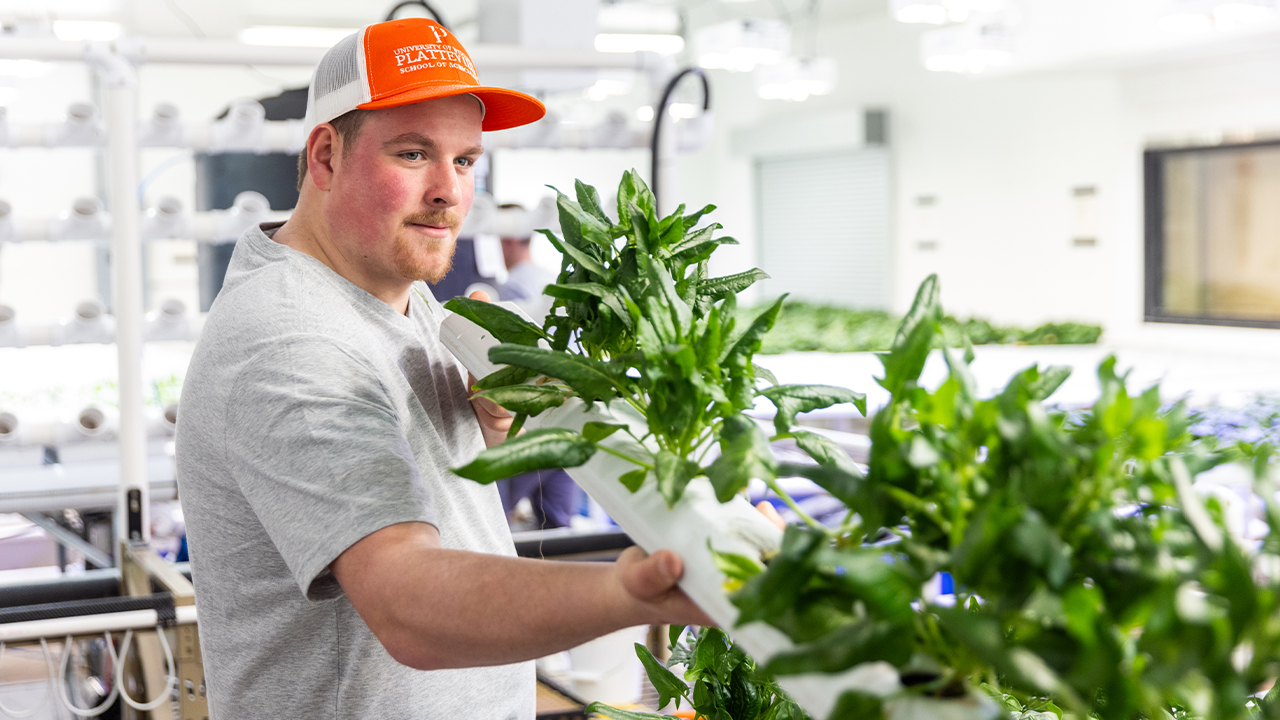
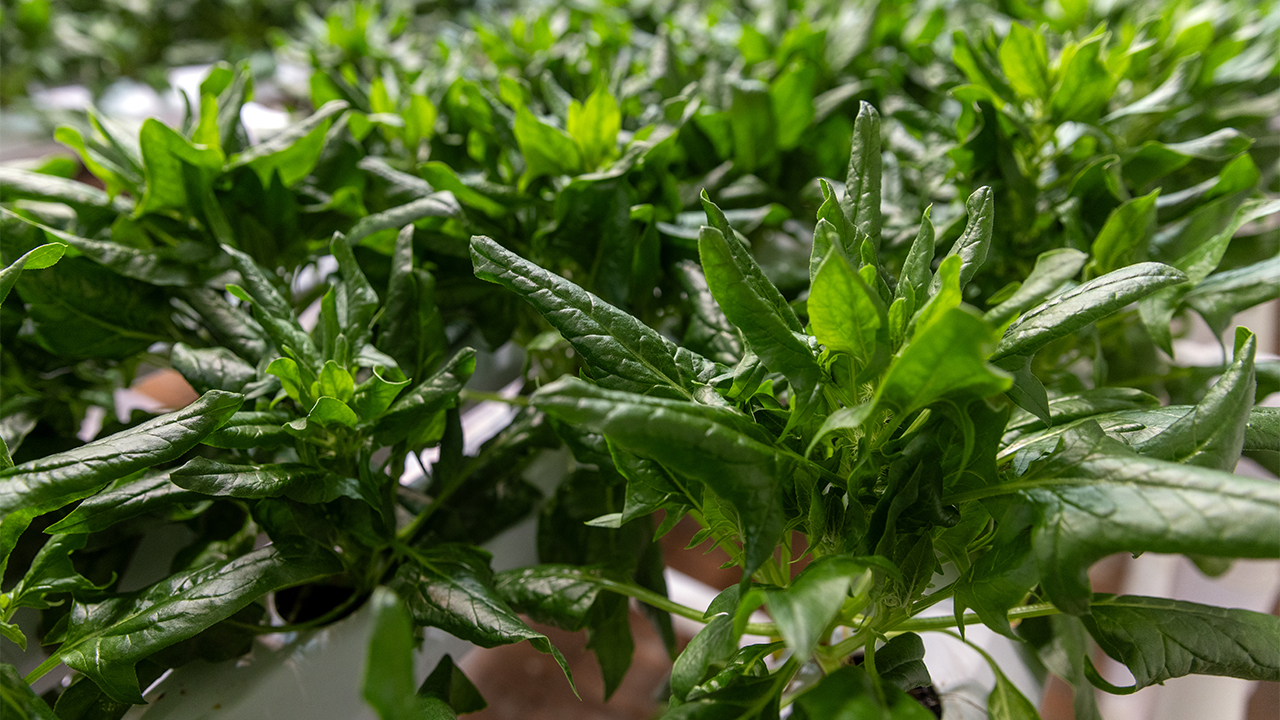
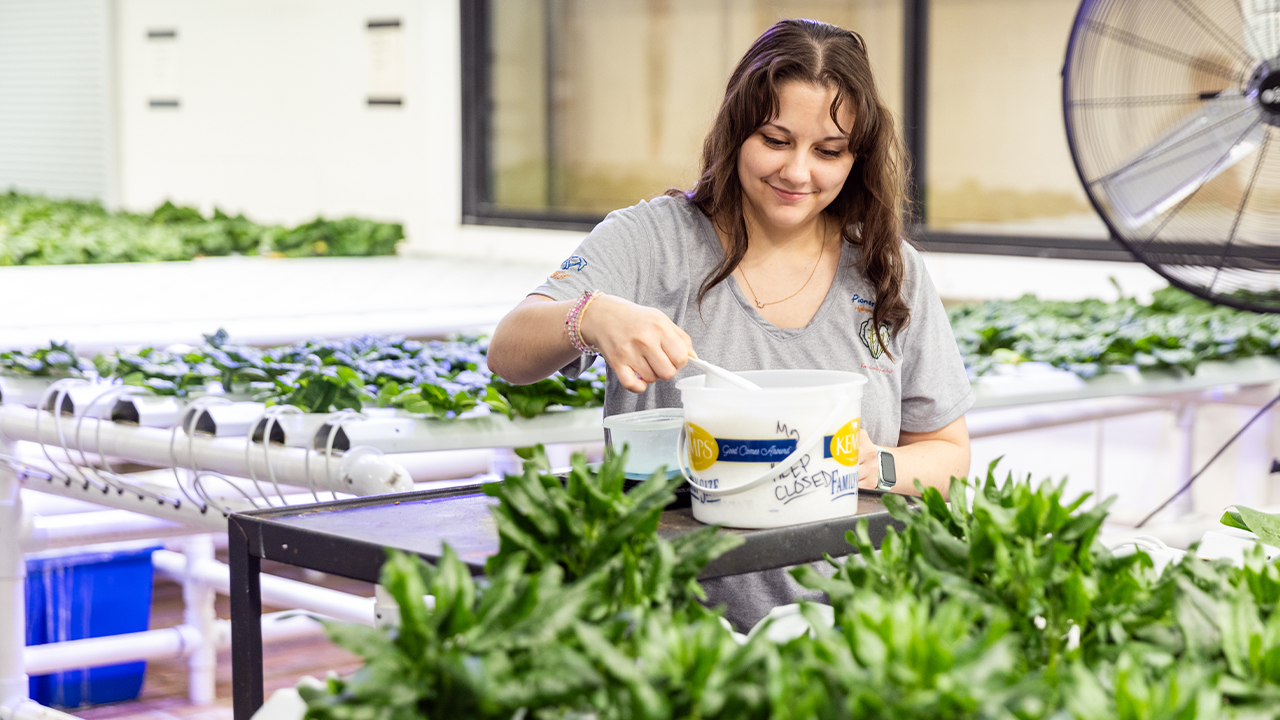
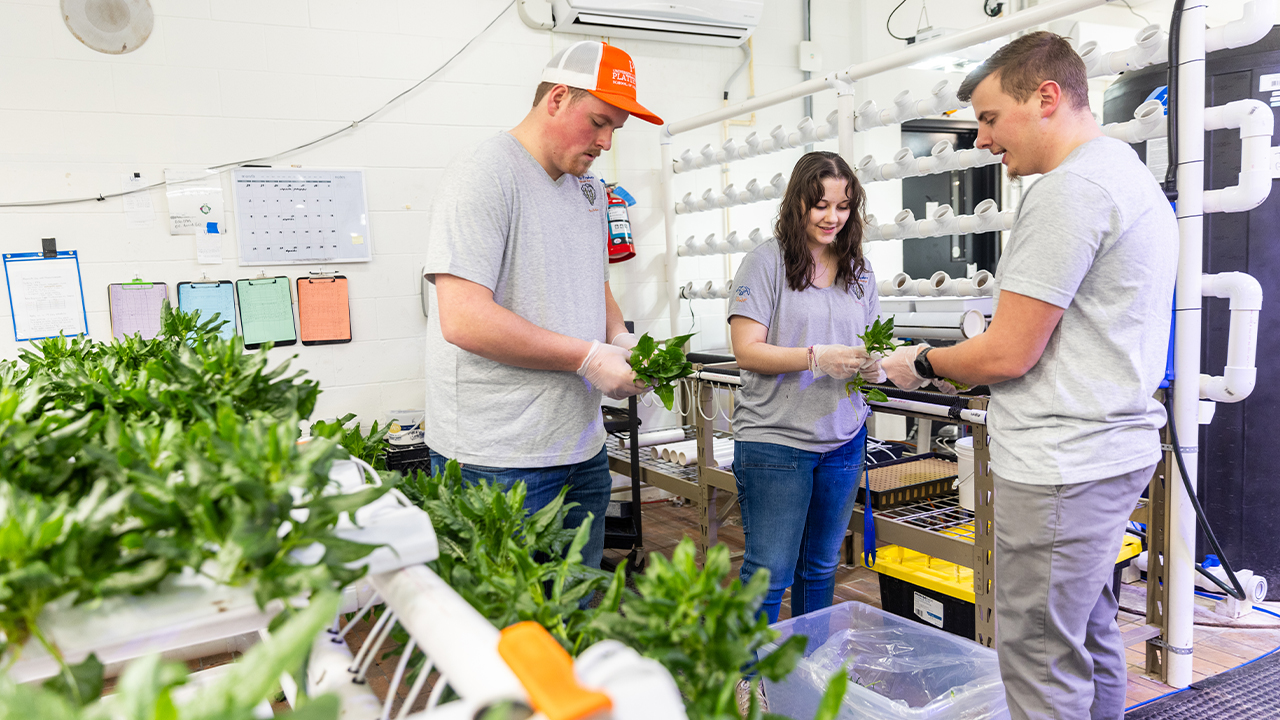
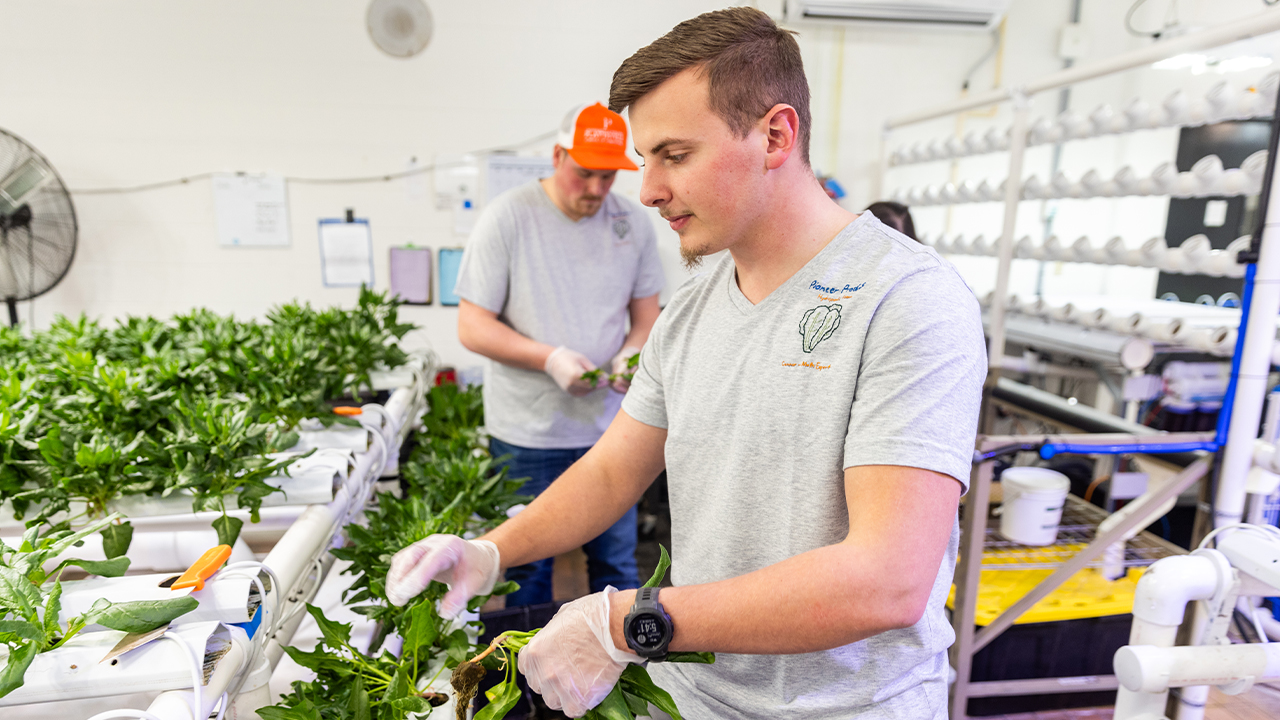
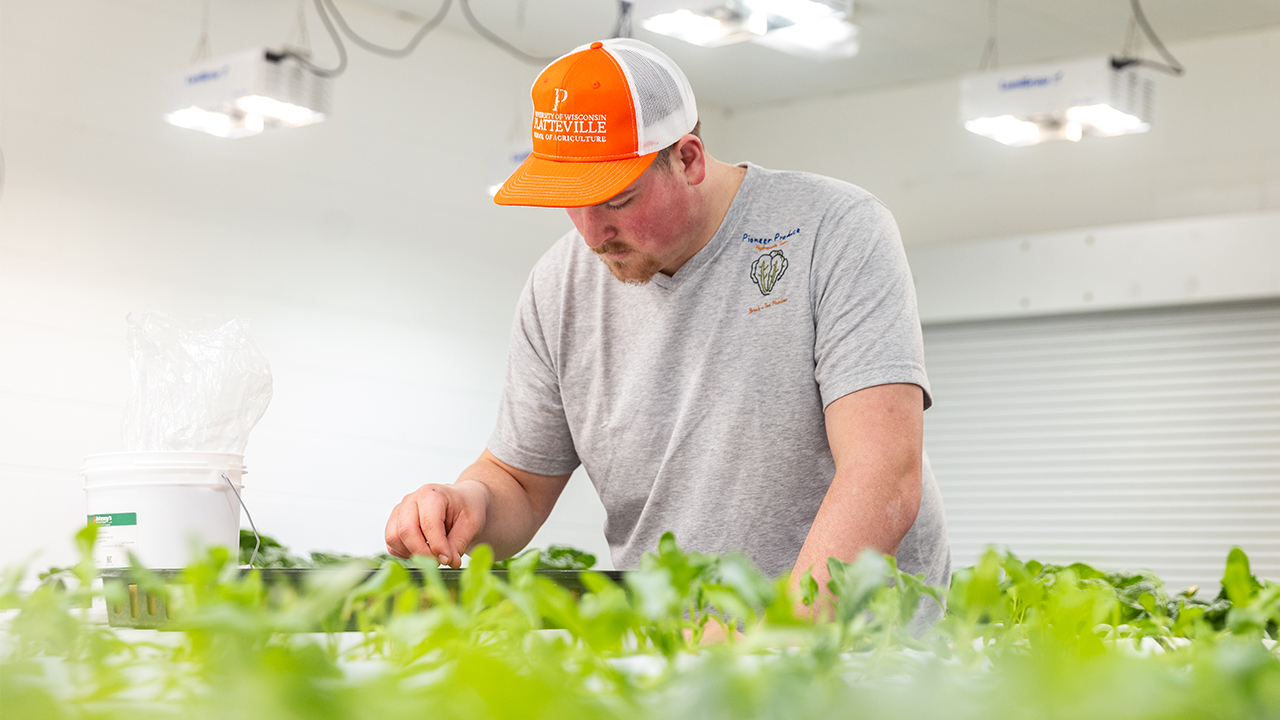
What’s happening inside a lab at the University of Wisconsin-Platteville offers a resilient alternative to food supply issues, while educating students at the same time. The hydroponics lab, located in Glenview Commons, is a shining example of how new measures can be implemented to meet the need for sustainable, local food production. The student-run facility which opened in 2019, serves as a living classroom where they can explore innovative farming methods and contribute to the future of agriculture.
Kassandra Clint, a senior from Brodhead, Wisconsin, majoring in soil and crop science and environmental horticulture with an emphasis on plant breeding and genetics, is enthusiastic about the promise of the lab. For her, the hydroponics lab isn't just about growing food; it's about experimenting with new farming techniques and offering educational opportunities.
“Mostly, I think it boils down to the potential of the lab,” explained Clint, who also manages the lab. “We can experiment with a variety of food crops and hydroponics, which is exciting. But beyond that, it offers a valuable educational experience, showing students that agriculture isn’t limited to one way of growing food.”
UW-Platteville consumes about five tons of lettuce and spinach each year, with the lab producing one and a half tons of that annually. Using a film of water to provide essential nutrients, the system grows 100 pounds of lettuce per week, making the lab an integral part of the campus food ecosystem. The lettuce takes seven weeks to grow from seed to harvest, and it’s available to students within hours after being harvested.
“We often choose tomatoes and other products not for their flavor but for how well they transport from places like Florida or Mexico,” said Michael Ernst, executive director of Auxiliary Services at UW-Platteville. “The tastiest cherry tomato isn’t always the one that travels best. The long journey also results in nutrition loss, but by selecting different varieties, we can raise the nutritional value right here in the lab. We can focus on both flavor and nutrition, delivering a better product to our student diners.”
One of the core principles of the hydroponics lab is its sustainability. According to Rich Crow, assistant professor in the School of Agriculture, the entire system only consumes 1.3 kilowatts of electricity per hour, costing just $1.25 per day to run.
“We’re producing 100 pounds of fresh lettuce every week, and we’re doing it sustainably,” Crow said. “This efficiency is possible thanks to a unique, low-energy setup that maximizes the use of the existing building space. The building was already in use, but the space for the lab was idle. Since it was already being heated, it made sense to utilize the existing space.”
But the lab’s work doesn’t stop there. Students are also experimenting with aquaponics, a sustainable farming system that combines hydroponics with aquaculture. In this system, fish are raised in tanks, producing waste that’s converted into fertilizer for the plants. In turn, the plants filter and purify the water, creating a self-sustaining system. Though still in the planning stages, this aquaponics system could also expand the lab’s impact by not only producing vegetables but also fish for food.
“Aquaponics offers a more efficient use of water by producing two crops at once: the plants in the system and the fish for meat production,” explained Clint. “My goal is to expand the boundaries of our hydroponics system, bringing added educational value to the facility."
Ernst says they hope to eventually place a portion of a hydroponics lab where students can view it in the food court, creating an opportunity to understand the entire lifecycle of food production, from seed to cafeteria table. This hands-on learning is especially valuable in a world where students may not understand where their food truly comes from.
“It’s rewarding to collaborate with the School of Agriculture and create learning opportunities for students,” exclaimed Ernst. “It’s a real-world, practical experience. We can plant the seed, calculate the cost of growing it, track the yield, and because we have contracts for buying lettuce, we know the prices. This allows us to put a dollar figure on it. Students can leave here with the education to start their own farms.”
In a region like Southwest Wisconsin, where many students are unfamiliar with growing food, especially in the winter months, the lab serves as a window into how food can be produced locally. Controlling the cycle of food offers a unique advantage for the university.
“The lab embodies this sense of place, where nutrition, quality and education are all intertwined and accessible right here,” said Ernst. “It’s a tangible reminder that we have the power to nurture, grow and sustain our food locally, creating a deeper connection to what we eat and the world around us. This approach not only enriches students’ learning experiences but also cultivates a more mindful, sustainable future.”
By introducing students to hydroponics and aquaponics, the lab has the ability to spark curiosity and teach that food production doesn’t have to rely on large carbon footprints associated with fuel and long-distance transportation.
“Our mission is to be an experiment—constantly learning, adapting and pushing the boundaries of what we can achieve with hydroponics,” said Clint. “We embrace challenges as opportunities to grow and solve problems in our space. Ultimately, we aim to inform and educate about various methods of food production and inspire others to think differently about sustainability and food systems.”